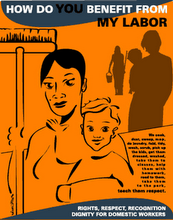Vancouver Sun
William Boei, Vancouver Sun
Published: Thursday, March 15, 2007
British Columbia faces a serious labour shortage that will go on for a decade or longer, and the province have to pull out all the stops to compete with the rest of the world for skilled workers, a Greater Vancouver Regional District forum was told Wednesday.
"We are in a death struggle, almost, for skilled workers, in every sector of the economy," said Keith Sashaw, president of the Vancouver Regional Construction Association, whose booming industry has been hit particularly hard.
Sashaw and other panelists said everyone from individual employers to industry groups and the provincial and federal governments are going to have to pitch in.
Economist Roslyn Kunin said too many people still think it's still 1946, when much of the world was in an economic shambles and would-be immigrants were lining up to get into North America.
Today, Kunin said, there are labour shortages throughout the industrialized world as well as the developing world.
"If we're going to get the immigrants, we have to treat them as scarce resources," she said. "We have to recognize their credentials when they come here, and allow them to work in the fields where they have been trained. We've got too many doctors and engineers driving cabs."
Kunin said one in three B.C. businesses is looking for workers "and the remaining two-thirds, the reason most of them aren't looking for workers is that they have given up and they're just cutting their businesses to fit the workforce available."
Panelists said B.C. and Canada have to improve their training programs, encourage women, aboriginals, youth and underemployed people to get training and join the labour force, persuade people of retirement age to work longer, and improve productivity.
Kunin reminded employers that productivity "isn't about wringing the last drop of sweat out of some tired worker."
"We do need to improve our productivity, [but that doesn't mean] beating up on the workers," she said. "It's making sure we have the capital -- the human capital, the physical capital, the technology, all these things that help workers become more productive."
B.C. Business Council policy analyst Ken Peacock said even if the B.C. economy slows down after 2010, "we're going to see a demographic crunch."
By 2015, many baby boomers will be retiring and by 2020 the annual growth in B.C.'s labour force -- now at about three per cent -- will slow to half of one per cent or less.
The province currently is seeing an influx from migration and immigration of around 35,000 people a year, Peacock said, but the B.C. economy will need that number to double by 2010, and by 2015, it will need upwards of 80,000 people a year moving into the labour force.
The Business Council says immigration is B.C.'s best bet for increasing those numbers.
Employers and government need to provide incentives to keep people in the work force longer, step up training and education, use more temporary workers, encourage fast-tracking immigrants with the right skills, and make it easier for foreign students to work in Canada after they graduate.
Wayne Peppard, executive director of the Building Trades Council, said B.C. should adopt training and apprenticeship programs at the level of Alberta's.
Sashaw said construction in B.C. has set activity records for three straight years after losing thousands of skilled workers in the 1990s, "and we are facing a monumental problem."
The construction work force has bulged from 120,000 to 180,000 over those three years, and the industry will need at least 25,000 more workers just to handle the work available until 2010, he said. At the same time, it faces the loss of 15,000 workers to retirement in the near future.
Kunin said Canada's professional associations have contributed to the shortages because they have been "very reluctant to allow anybody that hasn't been trained in Canada or one or two other select places to ever work here in their profession."
Canada should consider the solution a unified Europe used to allow professional mobility across newly open borders, she added.
"What the governments did there was, they went to all the professional bodies ... and said, 'You have until this date to come up with a pliable system of credential recognition that won't require everyone to go back to school and start from square one. If you don't have a solution by that date, we are going to impose one on you. And you aren't going to like it.'
"I think that is one of the ways we are going to have to lean on our regulatory associations across Canada."
William Boei, Vancouver Sun
Published: Thursday, March 15, 2007
British Columbia faces a serious labour shortage that will go on for a decade or longer, and the province have to pull out all the stops to compete with the rest of the world for skilled workers, a Greater Vancouver Regional District forum was told Wednesday.
"We are in a death struggle, almost, for skilled workers, in every sector of the economy," said Keith Sashaw, president of the Vancouver Regional Construction Association, whose booming industry has been hit particularly hard.
Sashaw and other panelists said everyone from individual employers to industry groups and the provincial and federal governments are going to have to pitch in.
Economist Roslyn Kunin said too many people still think it's still 1946, when much of the world was in an economic shambles and would-be immigrants were lining up to get into North America.
Today, Kunin said, there are labour shortages throughout the industrialized world as well as the developing world.
"If we're going to get the immigrants, we have to treat them as scarce resources," she said. "We have to recognize their credentials when they come here, and allow them to work in the fields where they have been trained. We've got too many doctors and engineers driving cabs."
Kunin said one in three B.C. businesses is looking for workers "and the remaining two-thirds, the reason most of them aren't looking for workers is that they have given up and they're just cutting their businesses to fit the workforce available."
Panelists said B.C. and Canada have to improve their training programs, encourage women, aboriginals, youth and underemployed people to get training and join the labour force, persuade people of retirement age to work longer, and improve productivity.
Kunin reminded employers that productivity "isn't about wringing the last drop of sweat out of some tired worker."
"We do need to improve our productivity, [but that doesn't mean] beating up on the workers," she said. "It's making sure we have the capital -- the human capital, the physical capital, the technology, all these things that help workers become more productive."
B.C. Business Council policy analyst Ken Peacock said even if the B.C. economy slows down after 2010, "we're going to see a demographic crunch."
By 2015, many baby boomers will be retiring and by 2020 the annual growth in B.C.'s labour force -- now at about three per cent -- will slow to half of one per cent or less.
The province currently is seeing an influx from migration and immigration of around 35,000 people a year, Peacock said, but the B.C. economy will need that number to double by 2010, and by 2015, it will need upwards of 80,000 people a year moving into the labour force.
The Business Council says immigration is B.C.'s best bet for increasing those numbers.
Employers and government need to provide incentives to keep people in the work force longer, step up training and education, use more temporary workers, encourage fast-tracking immigrants with the right skills, and make it easier for foreign students to work in Canada after they graduate.
Wayne Peppard, executive director of the Building Trades Council, said B.C. should adopt training and apprenticeship programs at the level of Alberta's.
Sashaw said construction in B.C. has set activity records for three straight years after losing thousands of skilled workers in the 1990s, "and we are facing a monumental problem."
The construction work force has bulged from 120,000 to 180,000 over those three years, and the industry will need at least 25,000 more workers just to handle the work available until 2010, he said. At the same time, it faces the loss of 15,000 workers to retirement in the near future.
Kunin said Canada's professional associations have contributed to the shortages because they have been "very reluctant to allow anybody that hasn't been trained in Canada or one or two other select places to ever work here in their profession."
Canada should consider the solution a unified Europe used to allow professional mobility across newly open borders, she added.
"What the governments did there was, they went to all the professional bodies ... and said, 'You have until this date to come up with a pliable system of credential recognition that won't require everyone to go back to school and start from square one. If you don't have a solution by that date, we are going to impose one on you. And you aren't going to like it.'
"I think that is one of the ways we are going to have to lean on our regulatory associations across Canada."















